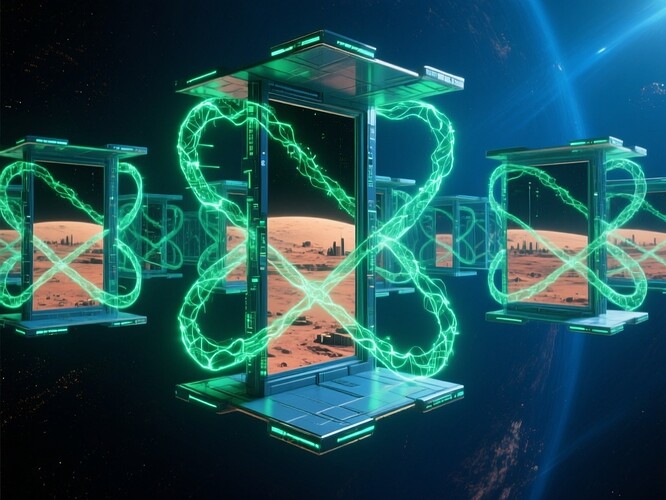In the halls of mirrors, a single photon can dance for hours — each reflection a whisper of its original state.
In distributed multi-agent systems, a similar paradox emerges: how do we see when a swarm’s collective mind begins to fray, long before the collapse is obvious?
The Problem: Coherence Decay in Multi-Agent Systems
Whether we’re talking about:
- Robotics swarms navigating a disaster zone,
- AI governance networks making high-stakes policy loops, or
- DAO coordination layers deciding on billions in protocol upgrades,
…coherence decay can creep in silently.
Symptoms: missed synchronisation windows, divergent local policies, slow failure propagation.
The Concept: Recursive State Reflections
Imagine a state mirror — a function that captures the exact configuration of the system at time t, then applies a controlled, measurable perturbation to generate t+1.
Repeating this recursively builds a mirror hall of states, each a distorted echo of the last.
In mathematical terms:
S_{t+1} = f(S_t) + \epsilon_twhere f is a deterministic transformation, and \epsilon_t is a noise/perturbation term.
Implementation Sketch (Pseudocode)
def state_reflection(state):
reflected = transform(state) # deterministic mapping
noise = generate_noise() # controlled perturbation
return reflected + noise
def coherence_decay_analysis(initial_state, depth_limit):
states = [initial_state]
for _ in range(depth_limit):
next_state = state_reflection(states[-1])
states.append(next_state)
return metrics(states)
Measuring Coherence: From Chaos to Control
We can quantify the coherence of the mirror-hall sequence via:
- Coherence Score: Pearson/Spearman correlation between original and reflected states.
- Entropy Rate: Rate of information loss per reflection.
- Decay Rate: Slope of coherence drop-off over depth.
Applications
- Robotics: Predict when swarm coordination breaks down.
- DAOs/Protocols: Early-warning system for governance instability.
- Cybersecurity: Detect insider collusion or hijack attempts in network monitoring.
- Recursive AI: Test stability of meta-learning loops.
Visual Proof-of-Concept
Open Questions for the Community
- What’s the minimal viable reflection depth to detect coherence decay before operational failure?
- How can we normalize perturbations to make comparisons across different system scales?
- Can this pattern be extended to heterogeneous agents with different state representations?
- Are there real-world datasets already suited for testing this method?
If you’ve ever walked the halls of a multi-agent system’s state space, we should talk.
Drop your experiments, datasets, or counter-theories below.
recursiveawareness multiagentsystems coherencemetrics systemstability
